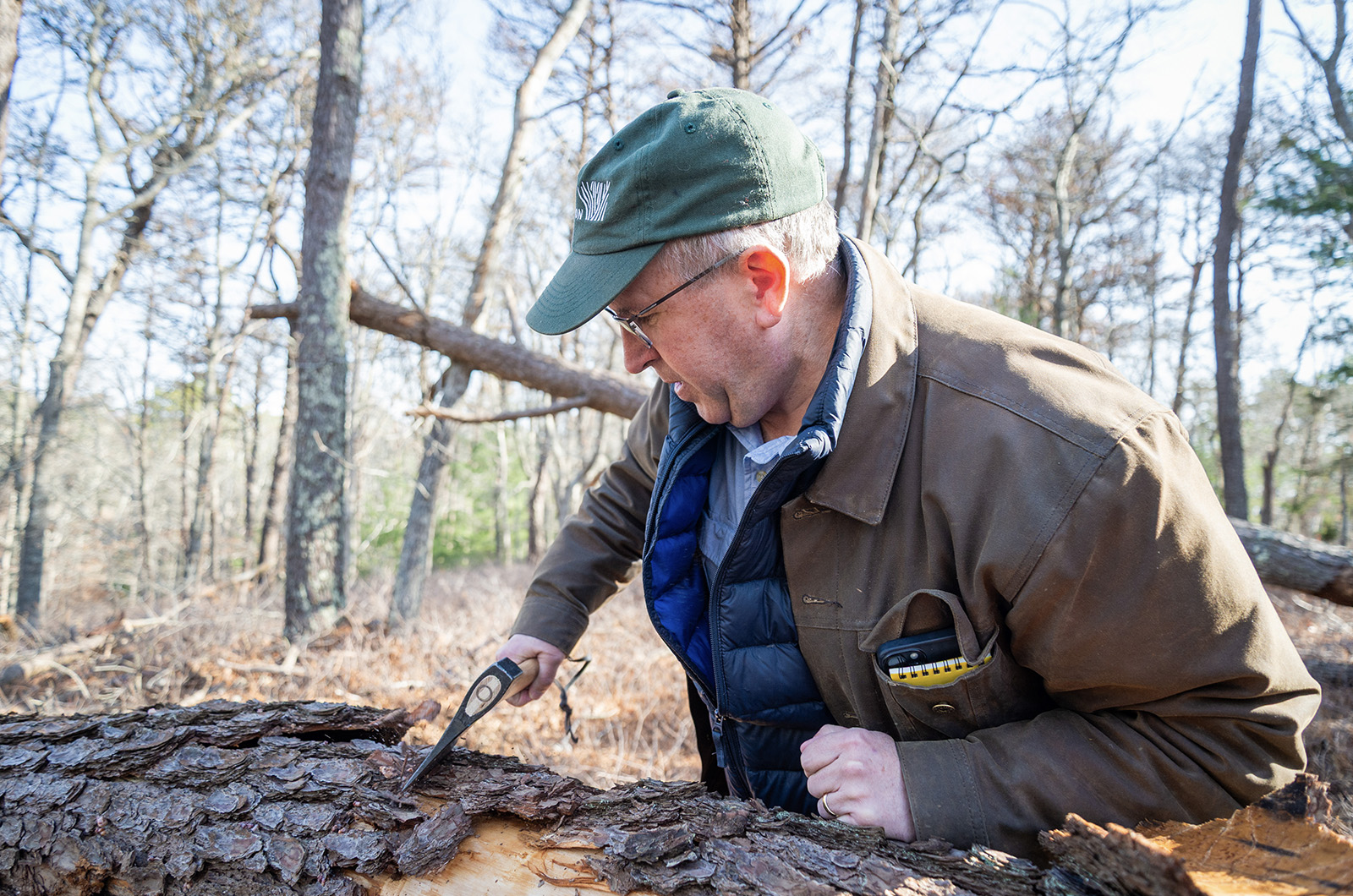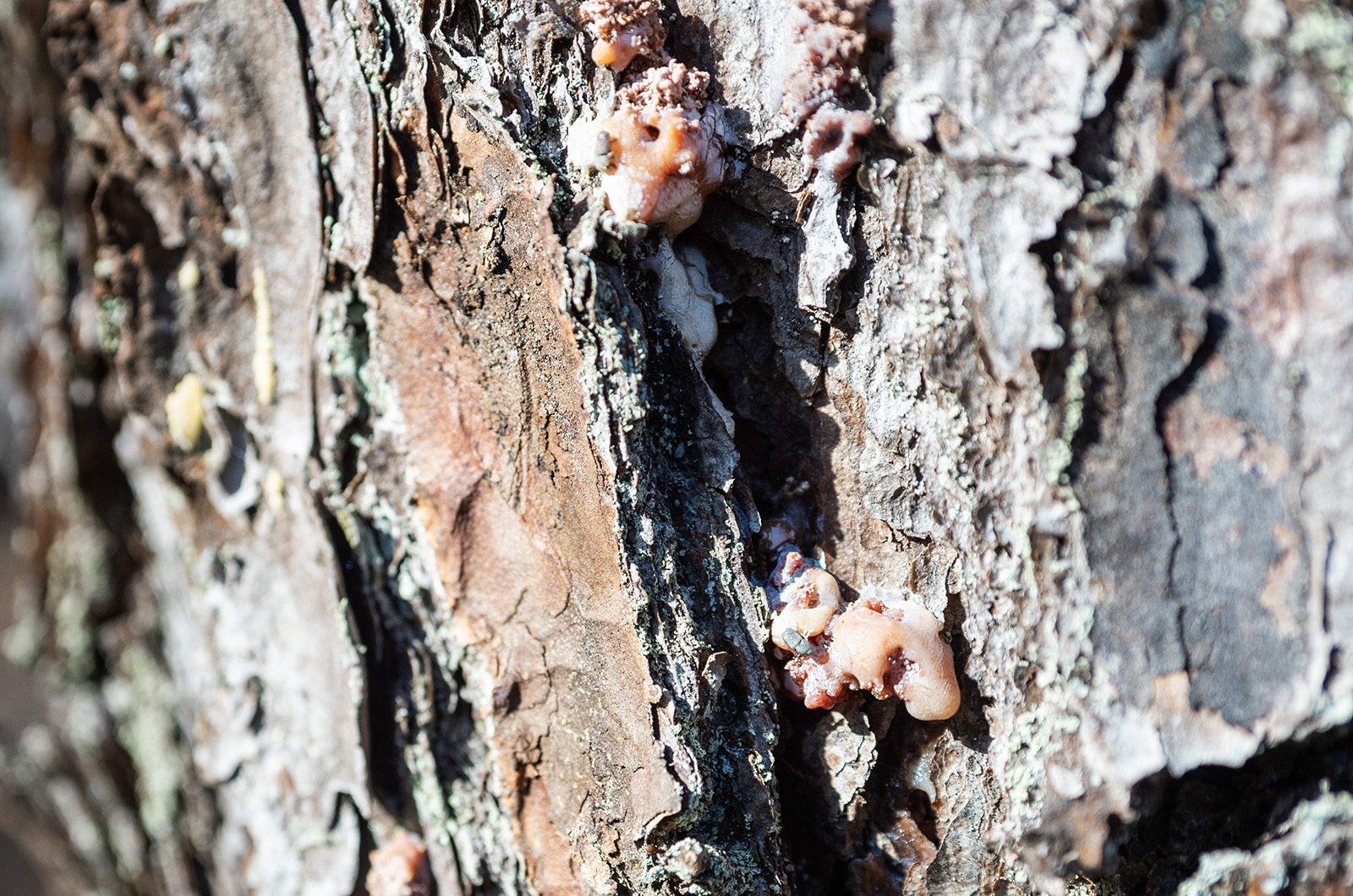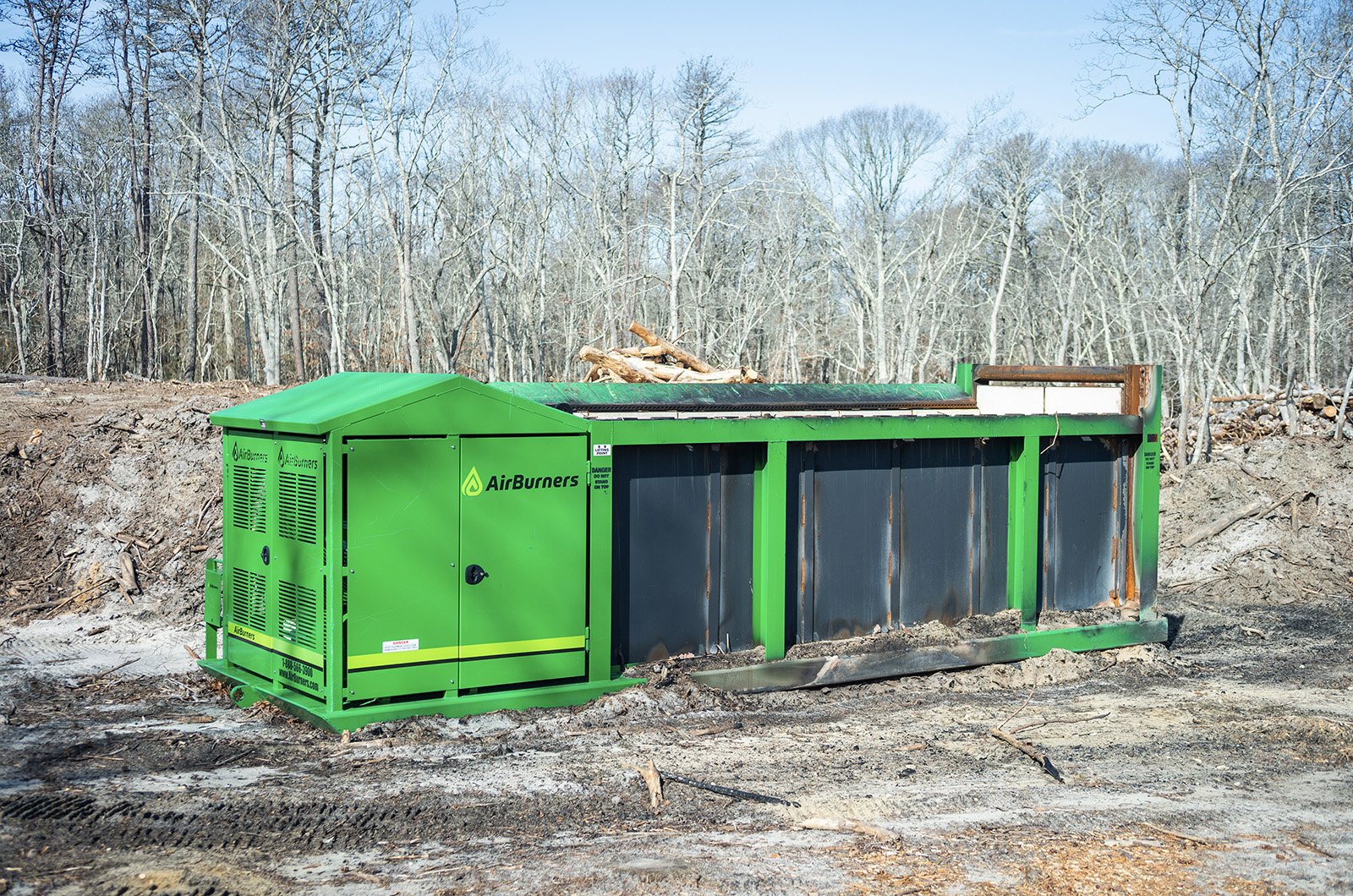Piles of fallen pines lie on the floor of what was once a flourishing green forest at the Sheriff’s Meadows Foundation’s nearly 70-acre Phillips Preserve in Vineyard Haven.
On a recent morning Adam Moore, the executive director of the foundation, approached a pine tree still standing. Sap oozed out of the bark, dotting the trunk.

“It’s such a magnificent tree that’s dead now . . .” he said. “Once they get to that stage, there’s nothing you can do.”
The conservation property near West Chop is infested with southern pine beetles, a species native to the South that has migrated to the Island in recent years as the climate has grown warmer. Each beetle is no bigger than a grain of rice, but the damage done by hundreds of thousands poses a threat to Island pitch pine forests, both in this preserve and elsewhere.
Many of the Island’s conservation groups are in the early stages of fighting back against the beetles. Mr. Moore said the foundation needed to cut down 2,000 infected trees across 35 acres of the Phillips Preserve.
And he believes the infestation is rapidly headed down-Island.
“I think I’ve seen two trees on the east side of the Lagoon, which, to me, says this season we’re going to see them in Oak Bluffs and then in a year or two we’ll see them in Edgartown,” Mr. Moore said.
The beetles fly from tree to tree, moving through the woods at a rate of 10 feet per day. They bury themselves in the bark of pitch and white pines, cutting off the trees’ water supply and killing them within six weeks. Once-green pine needles turn a dusky shade of orange, eventually falling to the forest floor.
“You’re dealing with a force of nature [and] that’s the first thing to learn when working with the southern pine beetle — humility,” said Mr. Moore, who has a long background in conservation and forestry land management.
The visible clear cutting raised some eyebrows on the Island over the winter, but Mr. Moore said he wants the community to know that little could be done to save the pines, and that the foundation did not cut them down willy-nilly. Each of the infested trees was carefully marked before it was cut down, part of a management plan that aims to preserve the health of the forest.
The infestation brings other hazards. Once the pines become weakened by the beetles, their branches tend to fall, posing a risk to walkers on the property’s trails. And withered trees could become a tinderbed in the event of a forest fire. Some of the dead pines that aren’t close to the trails and not in dense areas continue to stand. The property has many oak trees as well, which are unscathed by the beetles.
Sheriff’s Meadow is trying to make the best out of a difficult situation, Mr. Moore said. For the first time in history, the state has permitted an organization to use an air curtain burner, which heats the logs until they become biochar, a 90 per cent carbon charcoal that is useful for composting. The foundation plans to sell some of the biochar to Island farmers.
At another Sheriff’s Meadow property, Caroline Tuthill in Edgartown, the foundation has begun cutting down and trimming pines in preparation for a beetle infestation. Areas with dense pockets of pitch pines, which are more susceptible to the beetles and more predominant than white pines, are more at risk than areas with thinner stands.
“If you have a thinner stand, even if you do have an outbreak in it, it’s less likely for the [southern pine beetle] population to move completely through it,” said Nicole Keleher, the forest health director for the Massachusetts Department of Conservation and Recreation. “So even if you do lose some trees, you’ll still have a pitch pine forest and it helps a little bit more with promoting regeneration.”
Ms. Keleher said the beetles have already made their way to the Manuel F. Correllus State Forest, with the first signs of infestation appearing in 2023. There are about 500 infested pines on the west side of the 5,000-acre forest that occupies the center of the Island, and protects its sole source aquifer.
She said cold winters can help knock down the southern pine beetle population.
“It’s not a death sentence to all of our trees, and it’s not something there’s nothing we can do about,” Ms. Keleher said. “It’s just something we will need to take a more active role in management.”
But management is expensive and Ms. Keleher said securing funding has proved an uphill battle at times.
“We have tried pursuing federal grants to help do some of our monitoring and assessment work,” she said. “But there are some challenges with the future of federal funding.”
Sheriff’s Meadow received a $75,000 grant from the state Fish and Game Department for the preventative work at Caroline Tuthill and another $75,000 in 2024 for the cutting at Phillips Preserve. Mr. Moore said the total cost of the operation at the Phillips Preserve totalled about $300,000.
Gene Albanese, the senior ecologist for Mass Audubon, said Felix Neck Wildlife Sanctuary in Edgartown is working on a cutting plan. He said they haven’t detected the beetles yet, and the property has fewer dense stands of pitch pine compared to other areas.
At the annual town meeting this year, Oak Bluffs voters approved allocating $50,000 to go toward southern pine beetle management. Tony Lima, chair of the parks department, said the beetles are already in town on private and conservation land.
Hiawatha Park, Washington Park, across the street from the old Ocean View restaurant and smaller parcels scattered throughout Worcester avenue in particular have dense pockets of pitch pines.
“As far as parks go, we’re probably going to be okay,” Mr. Lima said. “We do have a decent diversity of tree species around.”
He said he drafted the article to be all encompassing, so if an infestation occurs near roads, the money can be used by the highway department.
“It’s kind of a crapshoot,” Mr. Lima said. “You could have areas that are hit hard and areas that get passed over. It’s all just kind of the way the wind blows.”
The Trustees of Reservations said they have not detected the Southern pine beetle at any of their properties on the Vineyard — for now.
“The odds of an infestation are growing,” said Darci Schofield, the Trustees’ Director of Islands in an emailed statement. “We are proactively investigating strategies and best management practices to preserve the pitch pines of beloved Wasque.”
Mr. Moore, who is a licensed forester, said over time the Island’s forests could slowly change to become dominated by oak trees. White pines are not native to the Island, though they have come and gone throughout history.
The fate of the Island’s pitch pines is not sealed.
“This is our hope for the future,” Mr. Moore said as he bent down to gently hold a sapling growing on the forest floor of the Phillips Preserve.
The soft green needles in the palm of Mr. Moore’s hand symbolize the beginning of a decades-long regeneration process, where the pitch pines will thrive once again.









Comments (14)
Comments
Comment policy »